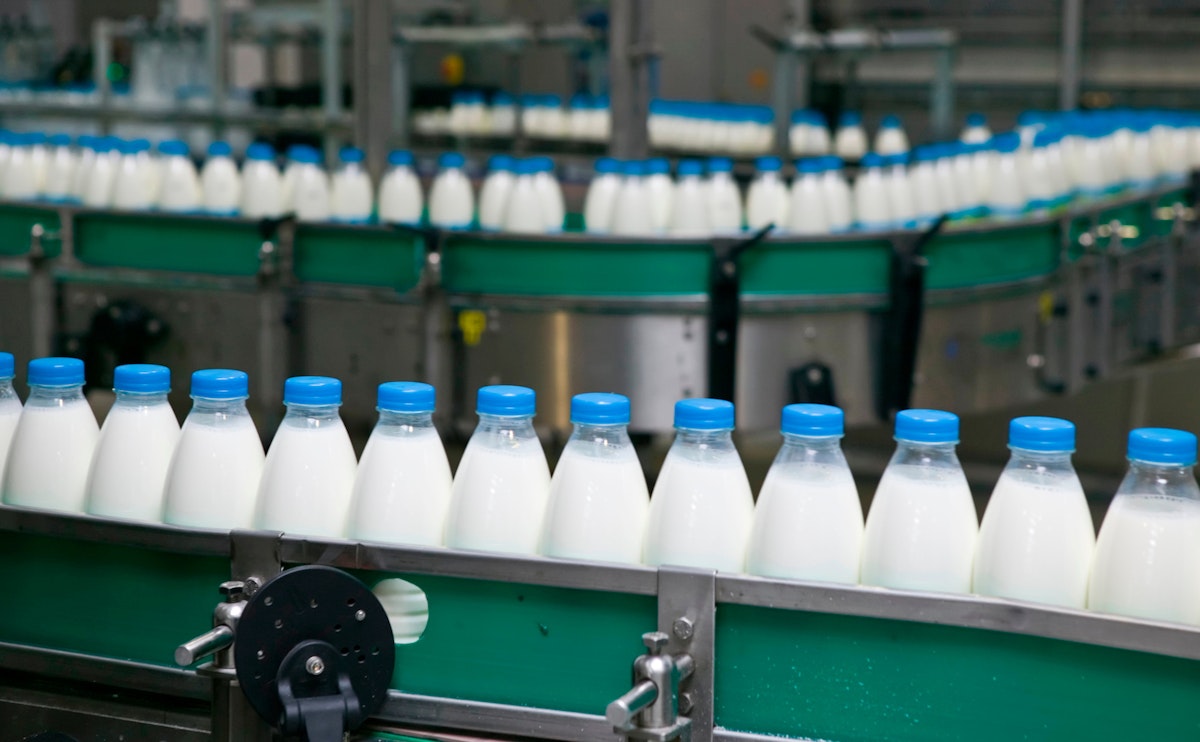Taking a Big Bite Out of Methane in Meat and Milk
How to incentive low-carbon production around the world

-
-
Share
-
Share via Twitter -
Share via Facebook -
Share via Email
-
As a potent greenhouse gas, methane puts food production in jeopardy though its impacts on planetary warming, reduction of crop yields via tropospheric ozone, and drops in livestock productivity. Cattle, sheep, and goats emit methane as a natural part of their digestive process as ruminants (technically known as “enteric fermentation”) as they turn the fibrous plants of their diet into milk and meat.
Dairy cow and beef cattle burps account for about 28% of all methane emissions in the world. But methane from livestock is not just a developed nation problem. Brazil, China, and the United States account for about a quarter of current methane emissions from cows and other ruminant animals. The remaining roughly 75% of emissions are from India and every other contributing country.

Thankfully, methane is short-lived in the atmosphere—meaning near-term solutions could be impactful in reining in climate impacts. Any steps to reduce the number of cattle, sheep, and goats advances goals to reduce methane emissions. One solution then is to curb methane emissions and halt global warming would be diet shifts to reduce consumption of meat and milk, reducing livestock numbers by default.
Yet while many consumers in developed nations are voluntarily choosing to consume less beef and dairy, these shifts may be offset by increased consumption elsewhere. Globally, people are eating more meat and drinking more milk, and not less. This growing demand (mostly in low/middle income countries) means methane emissions from livestock are projected to rise more than 45% in the next 30 years.
Thus, it would be risky to rely solely on shifting consumption, given how history has shown this to be difficult to achieve. Therefore, the need to manage livestock methane may be more important than ever. To that end, governments must incentivize lower carbon livestock production practices and tools to minimize warming and protect food production.
Targeting Livestock Diets
Researchers are developing novel feed additives such as supplementing feed with 3-NOP (3-nitrooxypropanol). When this molecule is added to the cattle’s diet, its effects on the animals can reduce methane emissions without negatively affecting production of meat or milk.
The trick is making sure the animals eat these feed additives regularly. If the animals are confined for at least part of the day—like when bringing cows up to be milked—it is easy to add supplements to their diet.
But many cattle spend their lives grazing out on grass under minimal confinement. One option requiring further testing is giving roaming cattle slow-release capsules to achieve consistent delivery of methane-reducing compounds. Another hands-off approach is placing nutrient licks or blocks containing the feed additives outside in the pasture. These mineral licks or blocks are already in use, but the addition of methane-reducing compounds must be tested both for shelf life and consumption rates.
Improving Livestock Production Efficiency
Livestock production systems across countries vary in their efficiency of production. Beef cattle in China and the United States produce 14.5 and 13.5 kilograms of CO2 equivalents per kilogram of beef, respectively. But in India, cattle produce almost 140 kilograms of carbon-equivalents per kilogram of beef. Lower-carbon intensity animal protein products, such as those produced in the United States and China, have come about as the result of improved management, nutrition, and genetics.
This variance shows what might be possible. It also illustrates how governments, particularly in developing nations, can reduce their livestock methane emissions by investing in breeding and feed management programs.
In the United States, dairy cow improvements were created through a combination of genetic selection, better nutrition, and management; researchers estimated about 55% of the yield increases were attributable to improved genetics. The United States also has used breeding protocols to select for animals with more efficient conversion of feed to meat and milk. For example, the US dairy industry reduced the amount of animal feed needed per kilogram of milk by 17% from 2007 to 2017. This came on the heels of the dairy industry reducing feed use per kilogram by 77% between 1944 and 2007. And China also continues to support improving production of beef through breeding and increased access to corn as feed.
Countries around the world also should help drive greater adoption of productivity-enhancing technologies that are proven to be safe to animals and people. Technologies such as rbST (recombinant Bovine Somatotropin hormone) can increase production efficiency, which could maintain annual milk demand in the United States with 157,000 fewer cows. Presently, rbST is approved for use by the US Food and Drug Administration, but neither the United States nor Chinese markets currently embrace animal products raised with rbST.
Decarbonizing is the Solution
The carbon intensity (for example, kg-CO2eq per kilogram of milk) of dairy and meat products is now becoming a focus of global climate convenings. The climate footprint of food was a major topic at the COP27, and it is on the agenda for the upcoming COP28 in Dubai. Low-carbon agricultural commodity trade standards could even be introduced into global climate discussions to tackle peak warming.
Ultimately, however, decarbonizing livestock production while providing affordable and high-quality meat and milk requires considerable government support. The options available for governments to help livestock producers increase productivity and adopt new emission-butting production practices include:
- establishing testing centers to conduct safety and efficacy studies for enteric methane inhibiting products;
- supporting on-farm methane emissions measurement, reporting and verification, and methane reduction demonstration trials;
- incentivizing the use of technologies like feed additives;
- providing technical and financial assistance, such as loans and insurance, to producers.
Turning Pledges into Action
On the eve of the COP27 climate talks in Glasgow, the United States and Europe pledged to reduce their methane emissions by at least 30% below 2020 levels by 2030. This agreement catalyzed the creation of the Global Methane Pledge, which now has 150 countries committed to voluntary action to reduce methane.
Funding for these commitments will be key. The philanthropic Global Methane Hub pledged to provide $40 million annually to support a variety of methane reduction efforts targeting agriculture around the world. But governments need to launch their own efforts to leverage these funds, not simply rely on them.
The US Department of Agriculture has strikingly doubled its funding efforts to address enteric methane emissions research, but the EU has not yet agreed to subsidies to encourage dairies to mitigate methane. China is preparing a National Methane Action Plan that likely will prioritize targets and investments into oil, gas and waste methane emissions but not yet agriculture. To rein in livestock methane, governments need to direct this funding to research and pilots for new livestock management and feed practices, rather than rely on existing practices and technologies.
